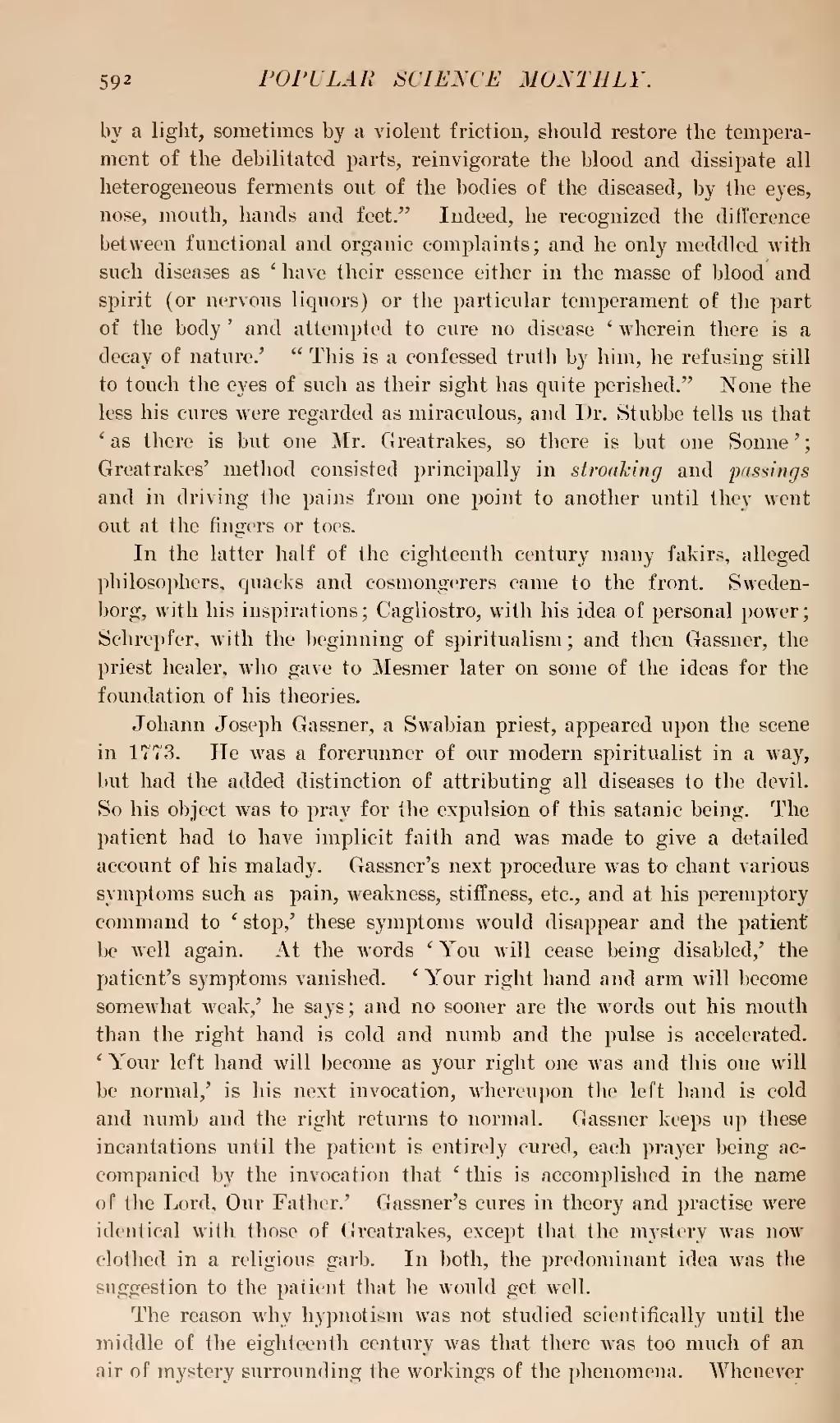by a light, sometimes by a violent friction, should restore the temperament of the debilitated parts, reinvigorate the blood and dissipate all heterogeneous ferments out of the bodies of the diseased, by the eyes, nose, mouth, hands and feet." Indeed, he recognized the difference between functional and organic complaints; and he only meddled with such diseases as 'have their essence either in the masse of blood and spirit (or nervous liquors) or the particular temperament of the part of the body' and attempted to cure no disease 'wherein there is a decay of nature.' "This is a confessed truth by him, he refusing still to touch the eyes of such as their sight has quite perished." None the less his cures were regarded as miraculous, and Dr. Stubbe tells us that 'as there is but one Mr. Greatrakes, so there is but one Sonne'; Greatrakes' method consisted principally in stroaking and passings and in driving the pains from one point to another until they went out at the fingers or toes.
In the latter half of the eighteenth century many fakirs, alleged philosophers, quacks and cosmongerers came to the front. Swedenborg, with his inspirations; Cagliostro, with his idea of personal power; Schrepfer, with the beginning of spiritualism; and then Gassner, the priest healer, who gave to Mesmer later on some of the ideas for the foundation of his theories.
Johann Joseph Gassner, a Swabian priest, appeared upon the scene in 1773. He was a forerunner of our modern spiritualist in a way, but had the added distinction of attributing all diseases to the devil. So his object was to pray for the expulsion of this satanic being. The patient had to have implicit faith and was made to give a detailed account of his malady. Gassner's next procedure was to chant various symptoms such as pain, weakness, stiffness, etc., and at his peremptory command to 'stop,' these symptoms would disappear and the patient be well again. At the words 'You will cease being disabled,' the patient's symptoms vanished. 'Your right hand and arm will become somewhat weak,' he says; and no sooner are the words out his mouth than the right hand is cold and numb and the pulse is accelerated. 'Your left hand will become as your right one was and this one will be normal,' is his next invocation, whereupon the left hand is cold and numb and the right returns to normal. Gassner keeps up these incantations until the patient is entirely cured, each prayer being accompanied by the invocation that 'this is accomplished in the name of the Lord, Our Father.' Gassner's cures in theory and practise were identical with those of Greatrakes, except that the mystery was now clothed in a religious garb. In both, the predominant idea was the suggestion to the patient that he would get well.
The reason why hypnotism was not studied scientifically until the middle of the eighteenth century was that there was too much of an air of mystery surrounding the workings of the phenomena. Whenever
